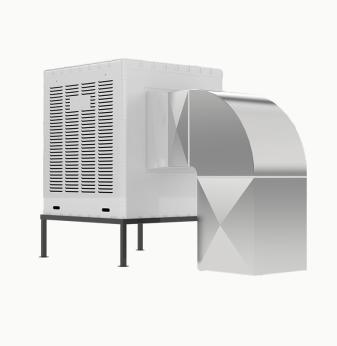Wireless Mesh Networks: New Opportunities for IoT and Smart City Infrastructure

As the Internet of Things (IoT) and smart city initiatives gain traction globally, there is a growing demand for scalable, resilient, and efficient network infrastructures. Wireless mesh networks (WMNs) are emerging as a critical enabler of this transformation.
Unlike traditional networks that rely on a centralized hub, WMNs are decentralized, self-healing systems where each node communicates dynamically with others. This makes them ideal for modern, data-intensive applications across urban environments and industrial sectors.
What Are Wireless Mesh Networks?
A wireless mesh network consists of multiple interconnected nodes (routers or devices), each capable of sending and receiving data. Instead of transmitting data through a central access point, nodes forward the data to one another in a "hopping" pattern until it reaches its destination. This design provides robust coverage, redundancy, and scalability.
Key Advantages of Wireless Mesh Networks
| Feature | Benefit |
| Self-healing | If one node fails, the system reroutes data through other nodes, ensuring continuity. |
| Scalability | New nodes can be added without disrupting the network. |
| Coverage | Ideal for wide areas, WMNs extend connectivity without extensive wiring. |
| Resilience | Mesh topology reduces single points of failure. |
| Cost-effective | Reduces infrastructure costs compared to wired alternatives. |
Why Mesh Networks Matter for IoT
With an estimated 29 billion connected devices expected by 2030 (Statista), traditional network infrastructures face limitations in bandwidth, maintenance, and deployment cost. Mesh networks solve these problems by allowing dense device deployments and high-frequency data transfers without overloading the system.
According to McKinsey, IoT-enabled smart city infrastructure could generate up to $1.7 trillion in economic value annually by 2030. WMNs play a key role in realizing this value.
In smart city deployments, mesh networks can support:
- Real-time traffic and streetlight management.
- Environmental and pollution sensors.
- Public safety systems, such as surveillance cameras.
- Smart parking and waste management solutions.
Smart City Use Cases
Smart Lighting and Traffic Control
Municipalities are integrating WMNs into streetlights and traffic signals. For instance, Barcelona's smart lighting system adjusts brightness based on pedestrian movement and reduces energy consumption by 30%. In Los Angeles, similar systems save the city an estimated $9 million annually in energy costs.
Environmental Monitoring
Sensors deployed throughout a city monitor air quality, noise pollution, and temperature. In Chicago, mesh-connected environmental nodes provide real-time data used to address urban planning and public health policies. According to the Smart Chicago Collaborative, the data has helped reduce exposure to high-pollution zones by 20%.

Emergency Response and Public Safety
Mesh-enabled surveillance cameras and emergency alert systems can operate even during infrastructure outages. They provide uninterrupted coverage and help first responders with accurate, real-time data. Research from the Urban Institute suggests that smart surveillance systems can reduce emergency response times by 25%.
Smart Utilities and Infrastructure Management
Water and electricity grids use mesh networks to monitor usage patterns and detect leaks or anomalies, reducing maintenance costs and response times. In Seoul, smart utility monitoring has decreased water waste by 15% and improved grid efficiency.
Wireless Mesh in Industrial IoT (IIoT)
Industries benefit from WMNs in environments where wired networks are impractical. For example:
- Manufacturing facilities use mesh networks for machinery diagnostics and predictive maintenance.
- Oil and gas fields deploy WMNs for remote monitoring and hazard detection.
- Agriculture leverages mesh-enabled sensors for soil health, irrigation, and crop tracking.
In 2023, the global Industrial IoT market was valued at $321 billion and is expected to reach $751 billion by 2028 (MarketsandMarkets). WMNs are a crucial backbone for this growth.
Challenges of Deploying Wireless Mesh Networks
| Challenge | Description |
| Bandwidth Limitations | Multiple hops can reduce throughput in high-data scenarios. |
| Interference | Urban areas may experience interference from other wireless systems. |
| Security Risks | As with all IoT systems, mesh networks require robust encryption and authentication. |
| Power Management | Nodes must balance processing with battery life in mobile or remote applications. |
Recent Trends and Innovations
- Integration with 5G: Combining WMNs with 5G offers high speed and low latency, ideal for real-time smart city services.
- AI-Driven Routing: Machine learning helps optimize data routing and reduce congestion within mesh networks.
- Solar-Powered Nodes: In areas lacking infrastructure, solar-powered mesh nodes support sustainable deployments.
- LoRa and Wi-Fi 6: Emerging protocols enhance range and performance, enabling better support for dense IoT environments.
Expert Insights
"Wireless mesh networking is the backbone of the future urban infrastructure," says John Chambers, former Cisco CEO. "Its decentralized nature supports the explosion of devices in smart cities."
Gartner forecasts that by 2026, 60% of smart city deployments will rely on some form of mesh networking due to its scalability and resilience.
According to Deloitte's 2024 Smart City Outlook, mesh networks will become the dominant architecture for new urban deployments, citing their 40% faster deployment times compared to traditional networks.
Promwad's Expertise in Wireless Mesh Networks
Promwad delivers custom engineering solutions for wireless communication in smart infrastructure and industrial automation. Our capabilities include:
- Embedded system design with mesh protocols (Zigbee, Thread, Wi-Fi Mesh).
- RF and antenna design for long-range, reliable communication.
- Edge AI integration for local data processing in mesh nodes.
- Custom software development for node coordination, monitoring, and security.
We help clients deploy reliable, future-ready mesh networks that align with both technical and business requirements.
Conclusion
Wireless mesh networks are redefining how we build smart, connected systems. As IoT and smart cities scale, these networks will play a pivotal role in creating robust, adaptive, and efficient infrastructures. With their inherent advantages in scalability, cost-efficiency, and resilience, WMNs are not just a trend—they're a foundational technology shaping our connected future.








